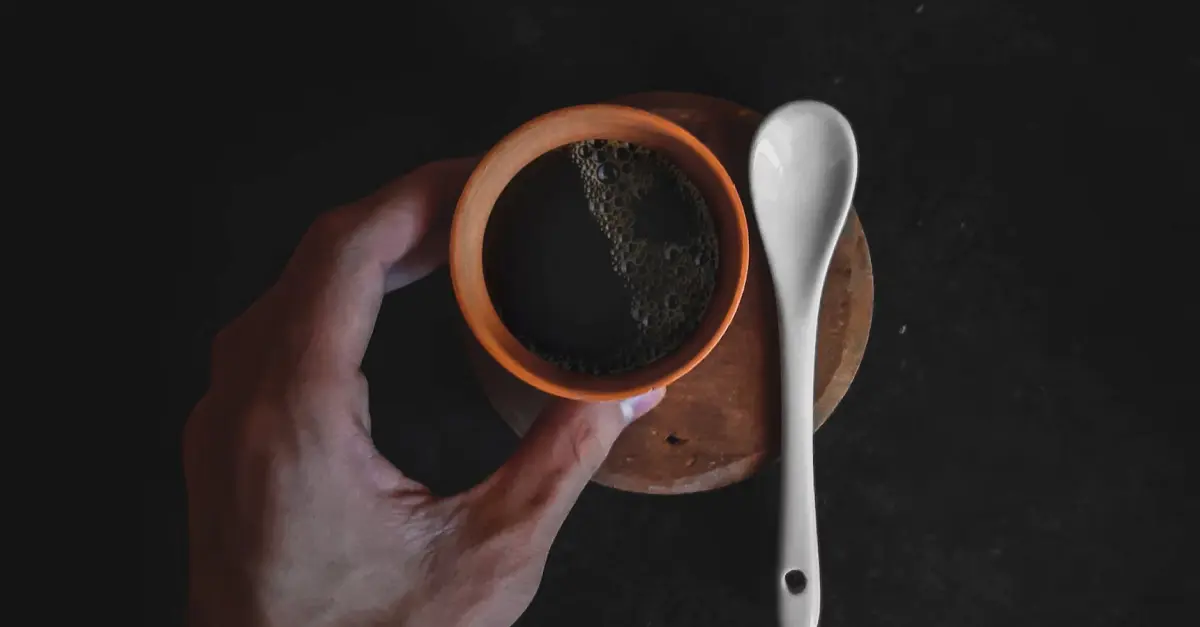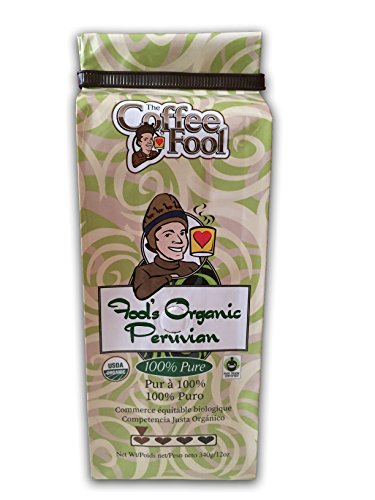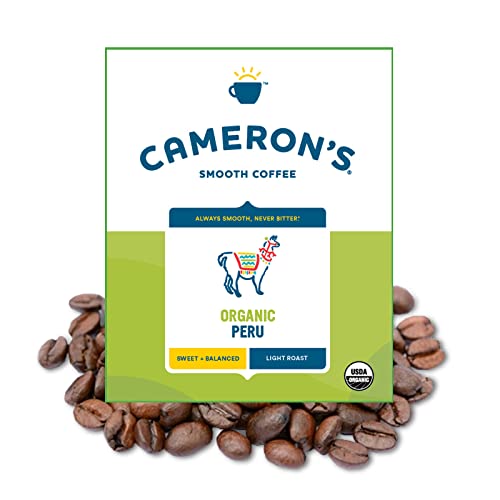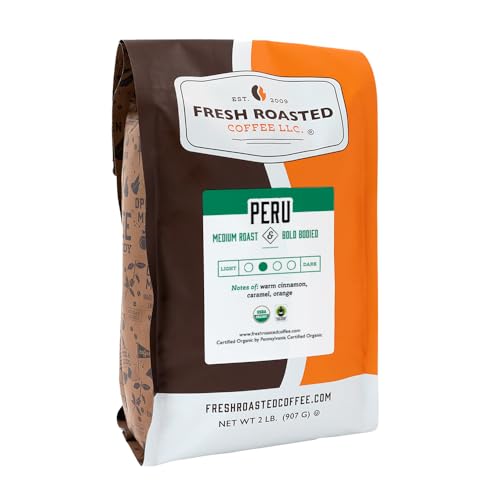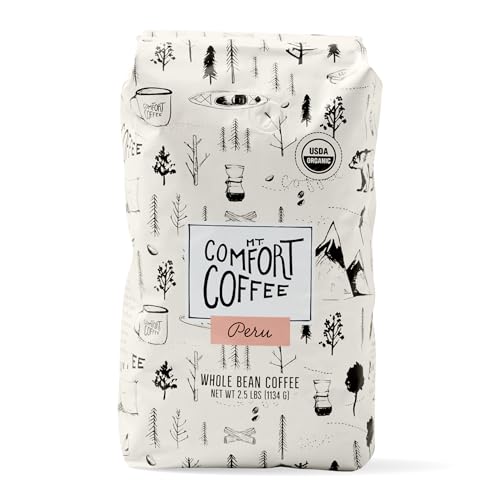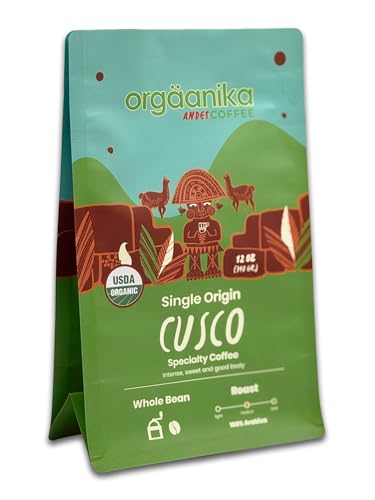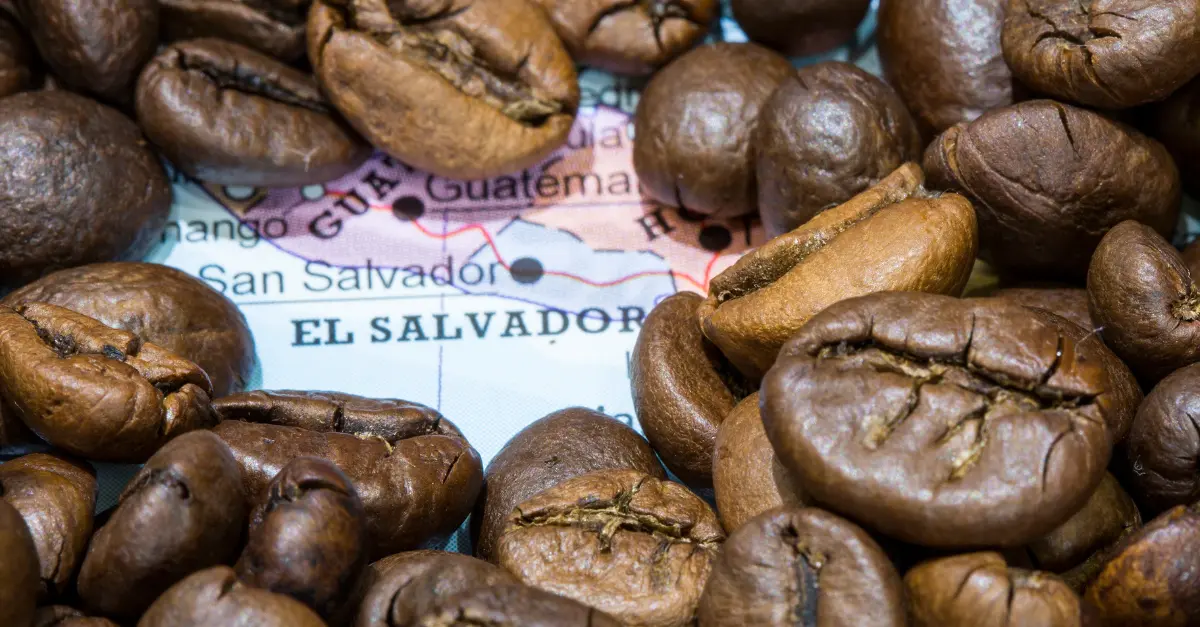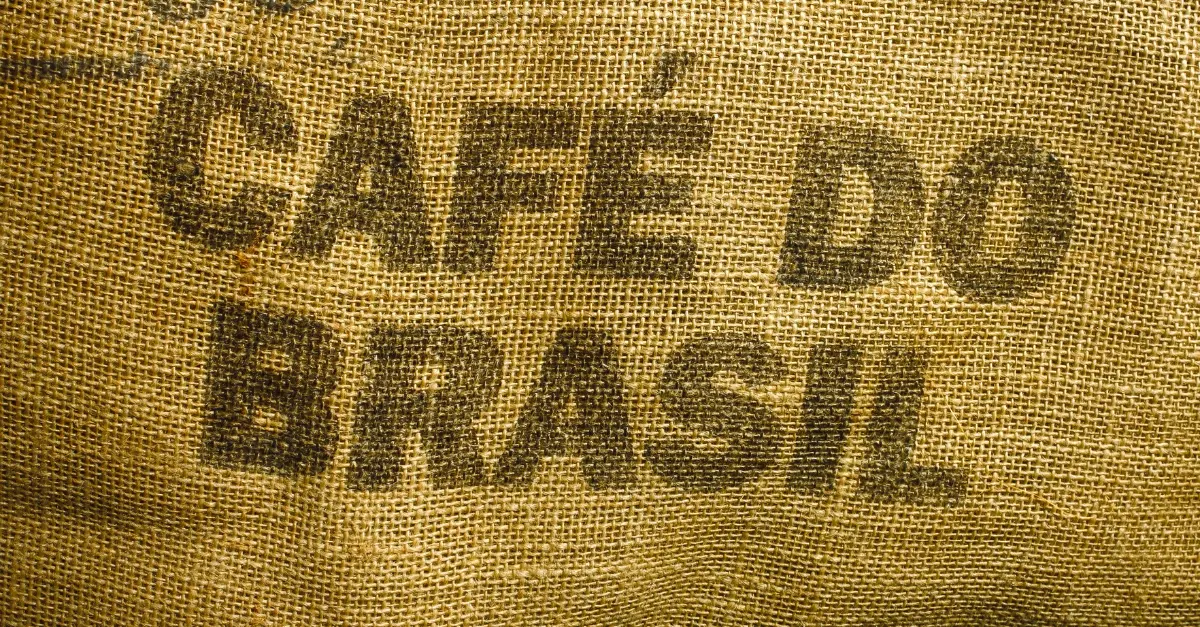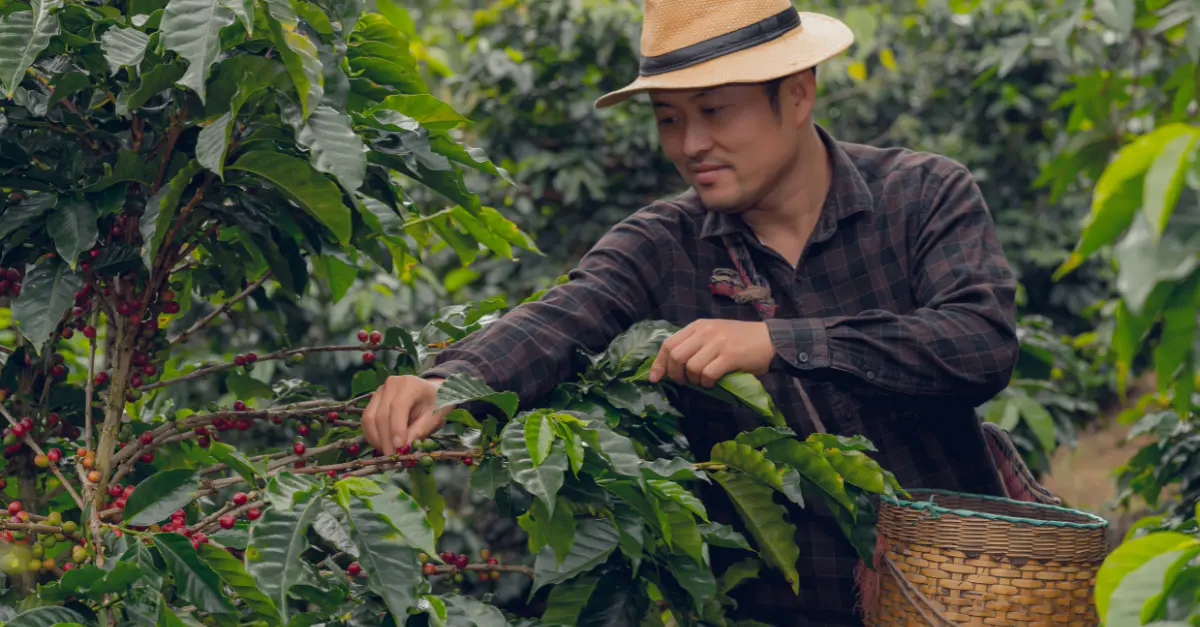Peru coffee beans are some of the most unique and commendable in the world.
Beyond having some of the best fair-trade coffee systems in the world, the Peruvian coffee industry also has become famous for its dung coffee (that’s right, poop coffee.)
Coffee beans from Peru are grown in high elevations by smaller farming operations in regions like the Andes Mountains and Amazonas. These growing conditions give the beans a chocolatey and nutty flavor that practically bursts with flavor. While not at its historic height, Coffee is one of the country’s main food exports.
Featured Products
Coffee Fool’s Organic Fair Trade Peruvian
⭐ 4.7/5 • 💰 ~$9
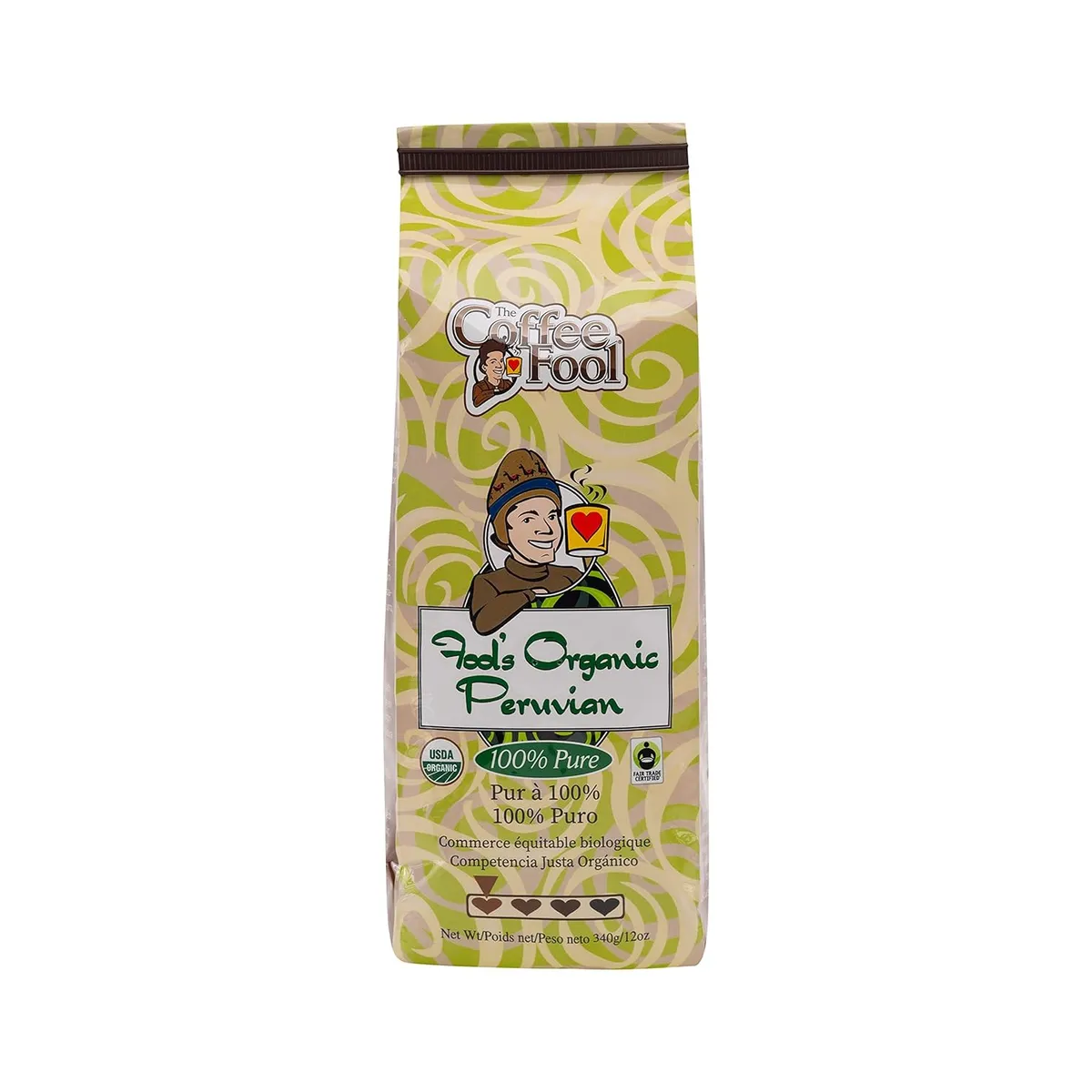
Coffee Fool’s Organic Fair Trade Peruvian offers robust flavor and ethically sourced beans making every sip a delight.
Key Features:
- Organic
- Fair Trade compliance
- Whole bean coffee
Pros:
- Robust flavor
- Ethically sourced beans
- Smooth and well-balanced taste
- Suitable for anytime consumption
Cameron’s Coffee Organic Peru
⭐ 4.5/5 • 💰 ~$48
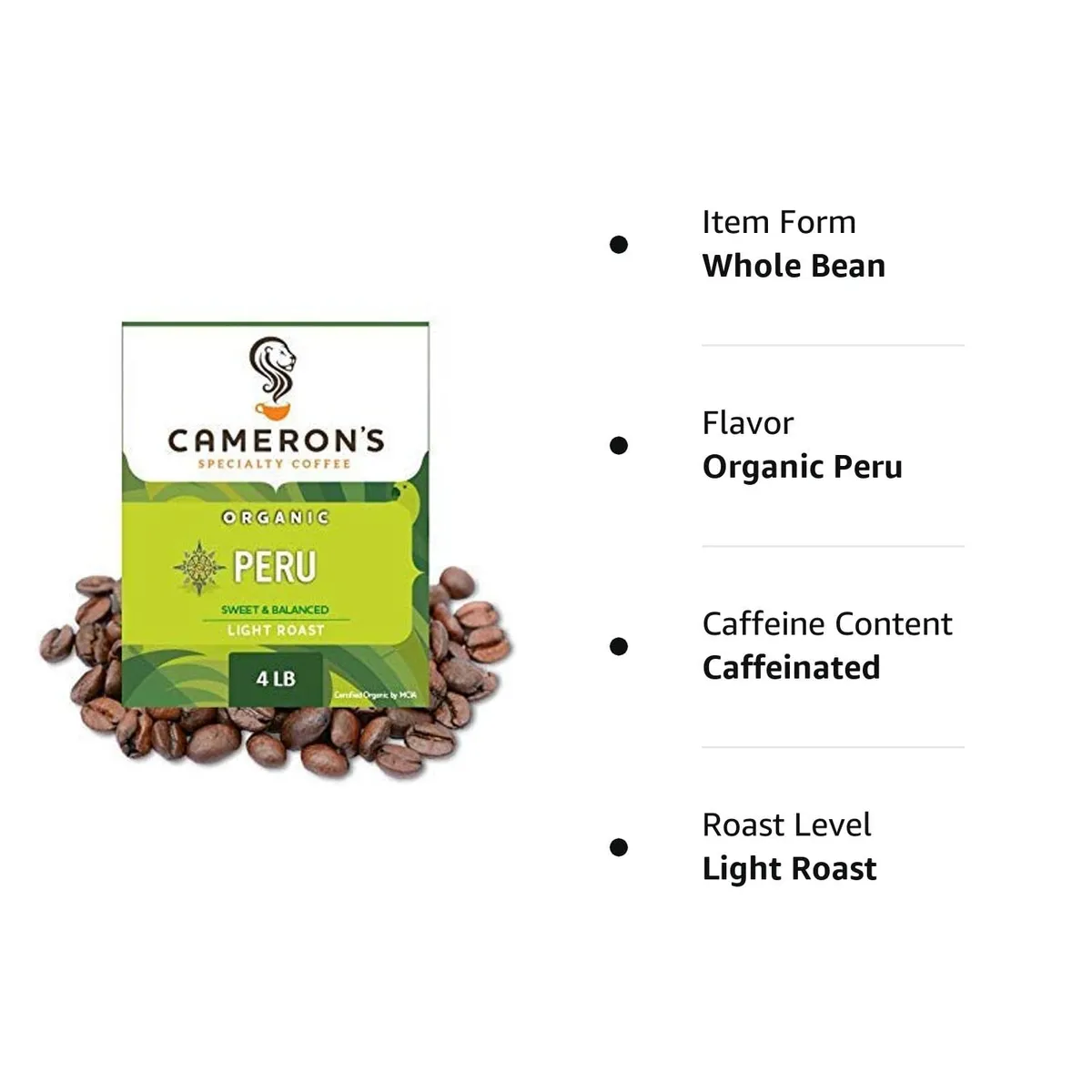
Organic, fair-trade coffee from Peru. Packaged in a 4-pound bag, offering a rich and smooth taste.
Key Features:
- Coffee bean product from Peru
- Weighs 4 pounds
- Coffee beans are organic
- Ethically sourced
Pros:
- The product contains organic coffee beans
- Unique, rich and smooth taste
- Ethically sourced from Peru
- Packaged in a 4-pound bag for long-lasting use
- Praised for its freshness
Fresh Roasted Coffee, Organic Peru
⭐ 4.5/5 • 💰 ~$24
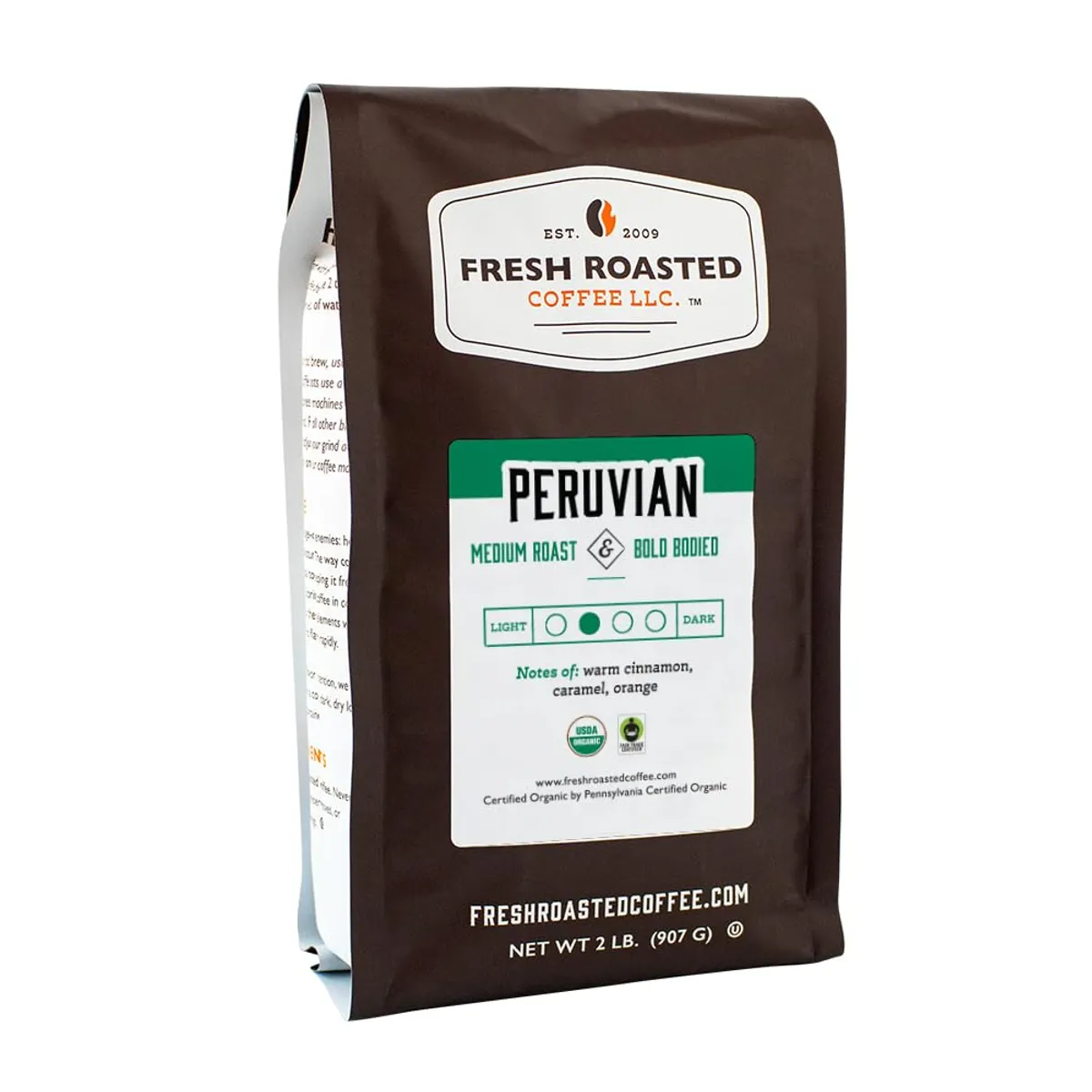
Medium roast Organic Peru coffee for a conscious consumption experience. Delivers a smooth taste, with 2lb available.
Key Features:
- Organic Peru coffee
- Medium roast level
- 2 lb (32 oz) weight
- Fair Trade and Kosher certified
Pros:
- Delivers a smooth, medium roast experience
- Ethically sourced as a Fair Trade product
- Certified as Kosher
- Offers rich and wake-up aroma
Mt. Comfort Coffee Organic Peru Medium Roast
⭐ 4.4/5 • 💰 ~$21
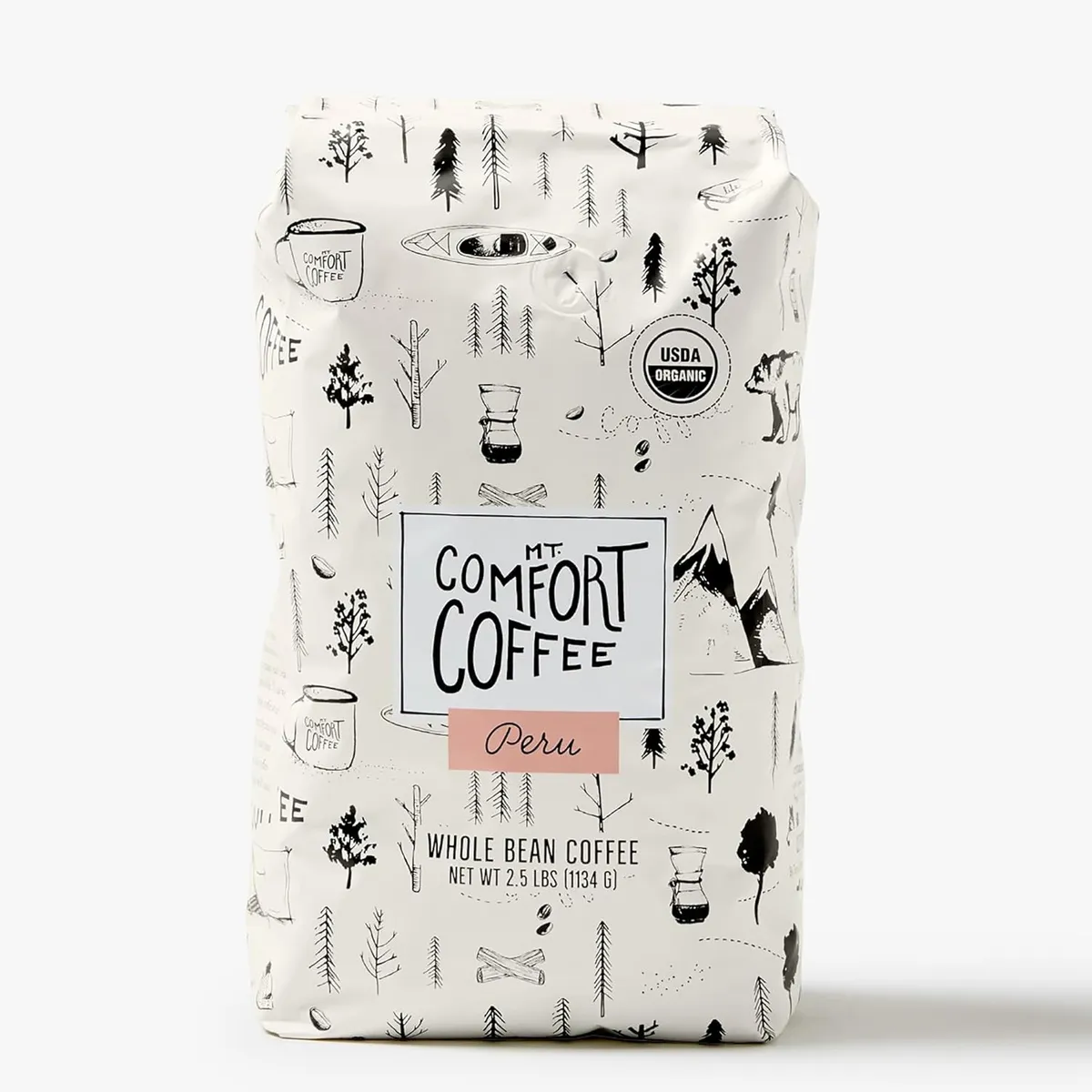
A 2.5 lb bag of organic, medium roasted coffee beans from Mt. Comfort, sourced from small Peruvian farms and offering nutty, chocolate and citrus flavor notes.
Key Features:
- Organic medium roast
- 2.5 lb bag
- Sourced from small farms in Peru
- Whole beans
Pros:
- Rich and complex flavor profile
- Organically sourced from Peruvian farms
- Whole beans for fresh grinding
- Great value for the quantity
AmazonFresh Organic Fair Trade Peru Ground Coffee
⭐ 4.2/5 • 💰 ~$6
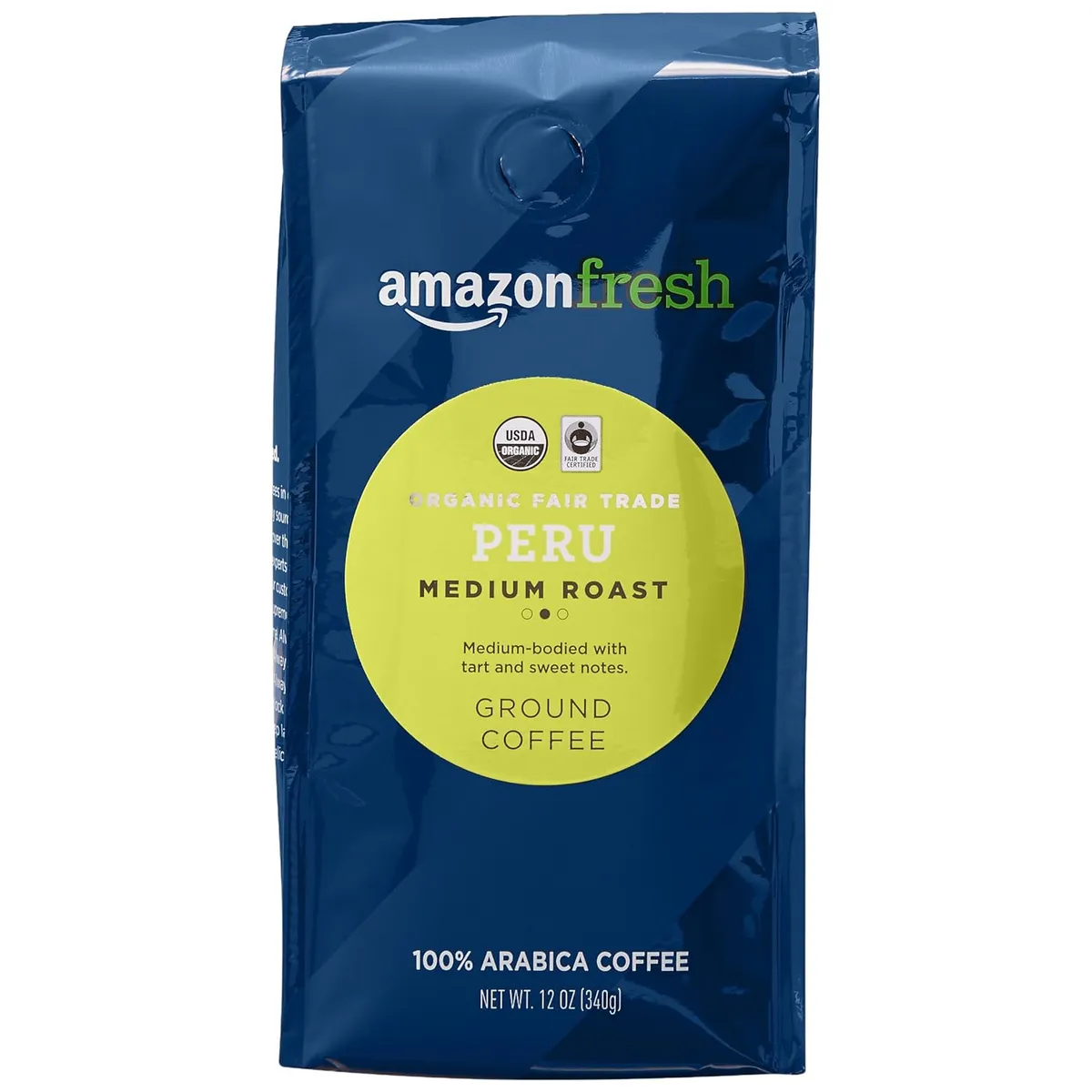
A medium roast ground coffee from AmazonFresh which uses quality 100% Arabica beans offering a smooth fragrant beverage with hints of brown sugar and chocolate.
Key Features:
- Organic Fair Trade Peru Ground Coffee
- Medium Roast
- Product weight: 12 Ounce
Pros:
- Made with high quality 100% Arabica beans
- Expertly roasted and immediately packed for freshness
- Has a fragrant aroma
- Offers smooth taste with hints of brown sugar and chocolate
- Affordable while maintaining excellent quality
Orgaanika Andes Cusco Organic Whole Beans
⭐ 4.1/5 • 💰 ~$9
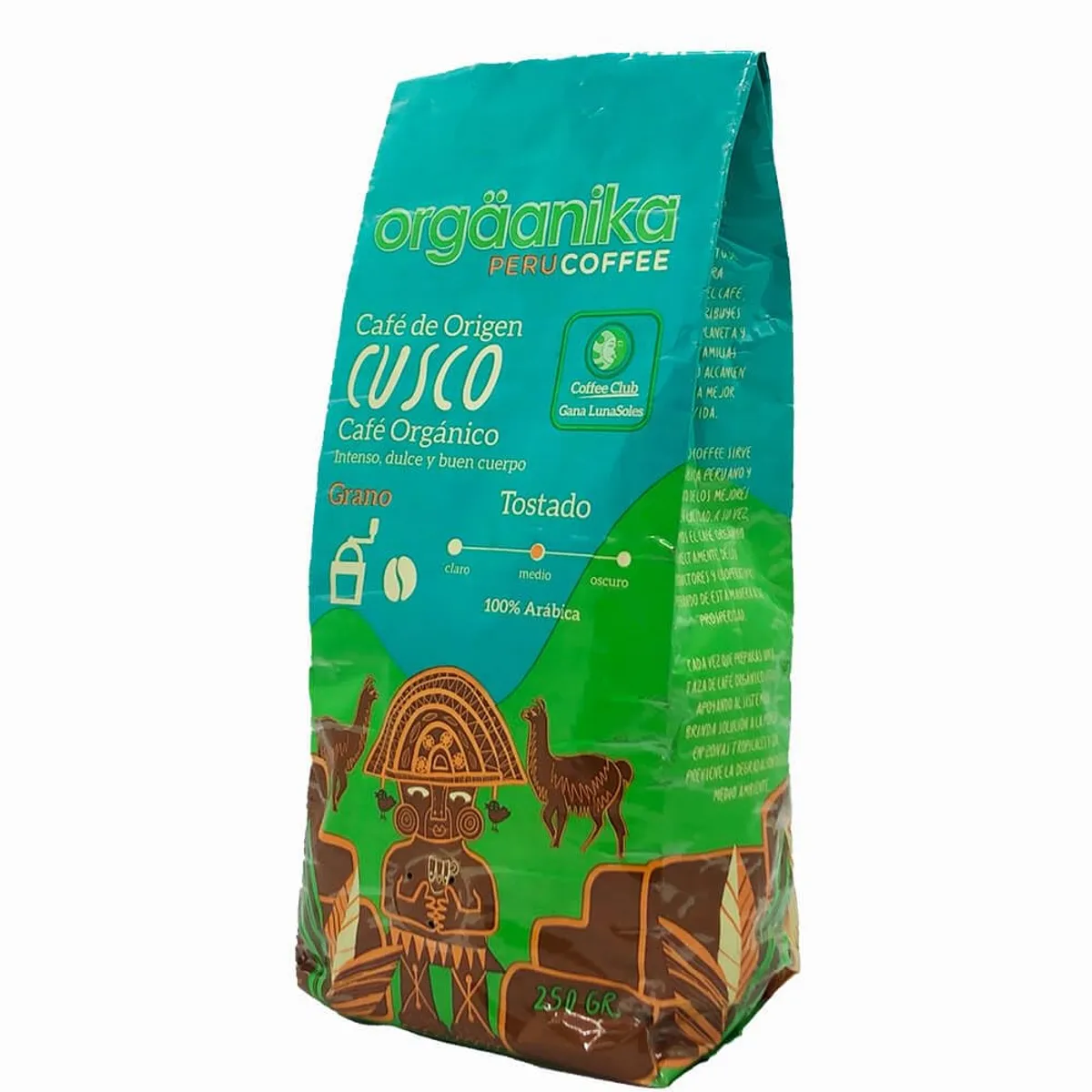
Specialty, single-origin organic coffee with medium body, chocolate, and caramel notes. Whole beans for maximum freshness.
Key Features:
- Notes of chocolate and caramel
- Medium body
- Medium acidity
- Whole beans for flexibility on grind coarseness
Pros:
- Organic, single-origin coffee ensures high quality
- Delivers a flavor full of chocolate and caramel notes
- Whole beans provide optimal freshness
- Offers flexibility to adapt the grind coarseness to your brewing method
Supporting The Peruvian Farmer Coffee Business
One of the most important cultural features of Peruvian Coffee Beans exists outside of the cup.
Peruvian Coffee farmers work hard to qualify as fair-trade sellers of coffee. Fair-trade coffee means the beans are sold at higher prices to benefit the farmers, workers, and families who process the beans. For this reason, coffee drinkers find buying Peruvian coffee beans more morally favorable because they know more money is going directly to the farmers and roasters.
International coffee drinkers may be surprised to hear about their fair-trade value, considering the coffee farmers of Peru grow on remote farms smaller than 10 acres. But it’s because of the remoteness of these farms that these fair-trade principles became common practice.
Historically, remote farmers didn’t have the resources to move their coffee to the wider international market. So cooperative leaders who acted as middlemen to the international coffee community arose to fulfill the demand for beans from Peru.
And this status as a fair-trade coffee farm isn’t just for show. The process to qualify as a fair-trade grower is rigorous. It takes three years of qualifying evidence to receive the fair-trade coffee status.
So when we talk about well-known farms, in Peru, we refer to well-known coffee and cocoa distributors as they are the first international point of contact with Peruvian farms.
The Two Main Coffee-Growing Regions in Panama
Nestled on the Western Pacific Coast of South America, Peru’s neighbors include other Coffee producing countries like Colombia, Ecuador, Chile, and Brazil.
The country is predominantly Christian and the 20th largest country in the world. A major tourist destination, you may have heard of the citadel of Machu Picchu and its historic Inca culture. However today, the capital of Lima and its surrounding lands are valued for its copper, gold, and animal meal exports.
The country’s highest points can be found in the Andes Mountains which run along the western interior just beyond the coast with an incredible variety of climates. Rainfall along the spine of the Andes can vary from 7 to 59 inches per year in some places.
The majority of the country is covered with the forested Amazon Basin. Peru has the fourth largest area of tropical forest in the world after Brazil, Congo, and Indonesia.
The mix of high elevations, quality forests, and heavy rainfall provides a fertile basin for incredible coffee growth.
1. Chanchamayo
The Chanchamayo Valley can be found in the Junin department, which is located in the center of Peru.
This region produces most of the beans you’ll find from Peru, with other northern regions creating the rest.
Many farms located in the Chanchamayo’s Central Highlands can be found as high as 5,000 feet elevation. With the nearby equator and Amazon rainforests, you can bet these farms will get plenty of moisture and nutrients.
In this lush region, the Arabica beans grow under native forest species with naturally fertilized soils that support migratory and native birds. We recommend checking out Cafe 338, whose beans come in many varieties and qualities.
2. The Northern Highlands
Within the Northern Highlands, there are three Peruvian departments (states or provinces) that grow incredible coffee.
- The Amazonas can be found on Peru’s Northern Border with Ecuador. The mountainous rainforest holds incredible soils that are hydrated by the Pacific Ocean.
- San Martin includes the upper Peruvian Amazon but has rough terrain. The steep topography can be great for small farms, but also causes flooding in lowland valleys.
- Cajamarca was the regional capital of the Inca Empire and was one of the oldest cities in South America. Its topography includes both the Amazon Rainforest and the Andes Mountain range.
Combining the three regions’ production capacities, you can expect more than 47% of beans to come from these farms. Pockets of these regions start at elevations of 4,000 feet, which is where you can begin to find farming communities in these regions.
From this region, we recommend checking out Cafetal, a popular farm with 55 years of Peruvian Arabic beans. Peru Cajamarca coffee is also a favorite of international coffee drinkers.
Peruvian Arabica beans
Arabica beans originally hail from Ethiopia, but were brought to Peru during the era of European colonization.
From the Arabica bean, farmers grow Typica, Bourbon, Caturra, and Gesha varietals. You can find these beans grown throughout South and Central America to varying degrees of success. In Peru, the beans are grown sweet and with a complex flavor.
When lightly roasted, you can taste an almost nectarine-like citrus flavor that compliments the chocolate undertones and floral notes. A common coffee sold around the globe, Arabica is one of the most types of coffee found on the market.
People love the smooth body that Arabica coffee brings to the brew. The care that Peruvian farmers bring to their growth shines in light-to-medium roasts. And at the high altitudes with ample forest cover, you can expect the nutrient-packed coffee beans to produce some wonderful floral and maybe even fruity flavors.
Try a lighter roast if you want to appreciate the work Peruvian farmers put into their beans.
Traditional Processing Methods and Poop Coffee
More traditional methods include washing, but the more fringe has begun to embrace poop-processed coffee.
Traditional Methods
In Peru, coffee beans are most often a washed or wet processed.
Washed processed coffee creates clean and delicious coffee. After a depulper takes the beans from the cherry, coffee processors set the beans into a tank of water to further wash and ferment the remainder of the cherry flesh.
Depending on the climate and altitude, this process lasts 24 to 72 hours. It’s critical to not over-ferment the beans because fermenting to the point of mold can lead to inedible beans.
Alternatively, some coffee farmers use a sun-dried method. After hand-picking the cherries, the cherries are placed on raised brick or tables where cherries are turned to dry. Then the fruity pulp is mechanically removed so the beans can green while they wait for export.
Modern Innovations
Newer innovations in coffee processing include honey-processed coffee.
When depulping the cherries, a slight coating of fruit is left on the bean. This fruity coating has sugars that are allowed to ferment and sweeten like honey. The bean is then allowed to dry with this sweet coat.
This process is considered risky because if allowed to ferment to the point of mold you can easily lose your product.
Popular in coffee competitions, anaerobic fermentation is similar to the washed method. After being depulped with a slight coating of fruit, the fermentation process is done in sealed and oxygen-deprived tanks.
It’s experimental, but anaerobic coffees have incredible, surprising flavors that push beans to their limit during a critical stage of their flavor-developing period.
Honey processing uses a more traditional style of techniques to achieve sweeter flavors, whereas anaerobic requires very specific sealing methods to achieve more floral flavors.
Poop Coffee
Poop coffee, which has grown in viral popularity thanks to the internet, involves processing the coffee cherry by passing it through the digestive system of a fuzzy Peruvian coati before being cleaned and roasted. These coatis are seriously so cute — think a mix of a raccoon, a monkey, and a cat.
Beyond poop coffee, Peru was originally introduced to coffee by European colonizers and travelers from the Caribbean. And unlike larger South American coffee growers, you can expect your money to go far as the fair-trade growers mainly benefit rural families.
To make sure you’re buying good Peruvian coffee or clean Peruvian poop coffee, you should consider where and how it was grown, how the fruit was processed, and of course what type of bean you’re brewing.
While it sounds absurd, there’s quite a bit of science behind the poop coffee method for processing coffee cherries.
The trend of poop coffee was first popularized in Indonesia. But the strange nature of it fetches a high dollar in niche markets — anywhere from $20 to $65 a cup.
The coati is an animal that can be found across South and Central America in various climates. In Peru, it’s often found in the cross-sections of the Andes Mountains and Amazon Rainforest — exactly where coffee is grown.
When feeding the coatis coffee cherries, the other fruits and vegetables the animal eats impact the overall flavor. After processing through its digestion, the cherry pulp remains partially fermented. Similar to honey processing, the fermented beans provide a sweeter flavor and enticing aroma.
Many reviewers say it strips the bitter coffee flavor from the bean and extends the aftertaste. However, others say dung coffee is a simple gimmick for a laugh.
Either way, the Cecovasa Collective and Chanchamayo Highland Coffee are reaping benefits from the bean.
Economic and Environmental Impact
In Peru, Coffee has an important place in specialty communities that are heavy coffee drinkers.
The country doesn’t drink as much coffee as other major South American coffee-producing countries. However, coffee sits as the country’s fourth largest food export.
Economic Driver
In 2021, Peru exported $56.6 Billion in products like precious metals, gold, fruits, and animal feeds.
Of the economy’s total income, coffee makes up a small amount — $764 million. Compared to the coffee-exporting giant of Brazil — which exported $5 billion in coffee beans in 2021 — Peru operates in the specialty grower space.
Germany, Belgium, and the rest of the European continent are major buyers of Peruvian coffee beans, with the United States and Colombia also buying larger amounts.
The income that coffee exports provide, especially with Peru’s fair-trade principles, isn’t nothing. Coffee is historically a cheaper product, so Peruvian farmers are likely getting a more fair shake than other coffee-producing countries because of their negotiating practices. This also benefits workers, where coffee is the third largest agricultural employment option.
In a society that relies heavily on the mining and extraction of copper, iron, zinc, copper, and tin, coffee farming is a less invasive and more sustainable form of income. Coffee is getting beaten out due to the rising costs of grapes, avocados, and blueberries.
Sustainable Practices
Peruvian families have long lineages of coffee-growing in their remote parts of the country.
The remote nature of their grows means farmers place heavy importance on teaching the new generations proper growing techniques and how to continue the legacy of the farms. These include organic techniques like shade-grown coffee and inclusive bird habitats.
By growing in shady regions, lush grasses, fallen leaves, and nutrient-rich soils fertilize the coffee trees. The fallen fruits provide sustenance for the bugs, forbes, and microbes that feed the birds who act as pollinators and pest control. The nutrients for the soil these animals provide grow incredible happy and healthy coffee cherries.
Additionally, the shady growth in moist climates like Peru means the water is easily retained and nutrients can push coffee trees to their maximum.
Coffee Culture in Peru
Peruvian coffee culture places the farmers on the second highest pedestal — the highest being the bean of course.
But it should go without saying that in a country whose fair-trade practices dwarf other major global coffee distributors, Peru has a deep love for the growing and drinking of coffee. One major way Peruvians celebrate the cherries and beans is through their Peruvian Coffee Day, a day christened by the Peruvian Ministry of Agriculture to promote local coffee drinking.
Peruvian Coffee Day lands once a year on the fourth Friday in August. You can bet during that Friday you’ll find great deals and great cups of coffee on the Peruvian streets of Lima and Cusco.
If you’re interested, consider adding a coffee tour that will take you deep into the high Peruvian coffee country. You can easily book a single-day trip with a guided four-hour drive to the remote farm, or check out the Sacred Valley coffee and cocoa plantation as well by booking an overnight coffee-cocoa tour.
We’re certain you’ll never see anything else like it in the world.
Commonly Asked Questions
Does Peru have good coffee?
We think Peru has incredible coffee that features a wonderful mix of flavor notes and a beautiful array of acidic tones.
When you taste a clean cup of Peru coffee, your tastebuds will be transported to the Andes slopes of Peru where cacao plants can be found growing with coffee plants. The Peru coffee flavor profile includes cacao, chocolatey flavors, and an herbal nutty taste.
Depending on the roast, you can also expect to find mild acidic tones in lighter roasts versus heavy bitter tones in darker roasts.
As with any specialty coffee, we recommend buying medium to medium-dark roasts. Or if you’re open to a more tea-like experience, buy a light roast.
So is coffee safe to drink in Peru?
With the incredible coffee-growing regions that dot the central and northern highlands of the country, we can tell you it’s safe to drink. We can tell you Peru grows some of the most morally righteous and organically sustainable coffee in the world.
Packed with nutrients and floral flavors, you can expect some incredible coffee from the Chanchamayo, Amazonas, and San Martin regions of Peru.
What does Peruvian coffee taste like?
Grown with love and care from the soil to the worker, coffee beans from Peru have a unique flavor profile. In a country where high-elevation wonders are no stranger, farmers do not fear the elevations that bring forth the best bean. The Peruvian farmers grow the coffee cherry with delicate care to impart it with delicious flavors and enticing aromas.
You can expect any Peruvian coffee beans to roast well, so be sure to pick your favorite roast to ensure you’re getting the best flavor.
Conclusion
In all, Peruvian coffee is truly one of a kind.
You can feel good about buying fair-trade, organic exports grown on small farms in the Andes Mountains and Amazon Rainforest. While they don’t sell nearly as much coffee as behemoths like Brazil, Peru still sells incredible organic coffee that both tastes divine and comes from the behind with poop coffee.
In addition to great-tasting coffee, Peru coffee also comes with a story worth telling to anyone willing to drink it.
